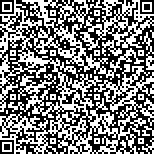下载中心
优秀审稿专家
优秀论文
相关链接
摘要

地表温度在全球能量平衡和气候变化研究中具有重要意义。中国新一代高分辨率卫星高分五号卫星(GF-5)搭载的全谱段成像光谱仪有4个40 m空间分辨率的热红外波段,可以提供高空间分辨率的地表温度信息。本文提出了适用于全谱段成像光谱仪的温度与发射率分离TES(Temperature and Emissivity Separation)算法同时反演地表温度和发射率,为了提高大气校正精度,算法加入了水汽缩放WVS(Water Vapor Scaling)大气校正方法。首先利用Seebor V5.0全球大气廓线库构建模拟数据对算法精度进行了评价;然后利用张掖地区11景ASTER影像作为替代数据和同步的地面实测数据对算法精度进行了验证。模拟数据结果表明加入WVS方法后TES算法反演地表温度的RMSE由2.59 K降低到1.54 K,4个波段地表发射率的RMSE分别从0.122、0.12、0.102和0.037降低到0.042、0.04、0.028和0.026;地表验证结果表明本文算法反演的地表温度与站点实测值具有更好的一致性,平均Bias由1.08 K降低到0.47 K,RMSE由2.17 K降低到1.7 K;反演的各波段地表发射率与地面实测结果误差均小于1%。因此,本文提出的温度与发射率分离算法具有较高精度,可以利用GF-5数据获取高精度高空间分辨率的地表温度和发射率数据,服务于其他相关研究。
Land Surface Temperature (LST), as a key parameter of surface physical processes at regional and global scales, is an important indicator of energy balance and climate change on the land surface. Land Surface Emissivity (LSE) is an intrinsic property of natural materials and is a key parameter of surface energy balance and mineral mapping. LSE is also an important input variable for LST retrieval. LST rapidly changes in space and time given the heterogeneity of land surface, and remote sensing in thermal infrared (TIR) provides a unique means of obtaining LST information at regional and global scales. GF-5 satellite, which was launched in 2018, is the fifth satellite in the national high-resolution Earth observation project of China. Visual and Infrared Multispectral Imager (VIMI) is a sensor onboard GF-5, which has four TIR channels centered at 8.20, 8.63, 10.80, and 11.95 μm with a spatial resolution of 40 m. In this study, we present a physics-based Temperature and Emissivity Separation (TES) algorithm (denoted as WVSTES algorithm) to retrieve LST and emissivity (LST&E) simultaneously from GF-5 VIMI data. The TES algorithm uses full radiative transfer simulations to isolate surface-emitted radiance and an emissivity calibration curve based on the variability in the surface radiance data to retrieve LST and spectral emissivity dynamically. Furthermore, an improved Water Vapor Scaling (WVS) model is adopted to improve the accuracy and stability of atmospheric correction for conditions with high atmospheric water vapor content.
First, Seebor V5.0 atmospheric profile database and 81 emissivity spectra extracted from the ASTER spectral library were used to simulate WVS coefficients. Then, reanalysis data of the Modern Era Retrospective-analysis for Research and Applications (MERRA) and fast radiative transfer model RTTOV were used to perform the atmospheric correction of GF-5 TIR data. Second, atmospheric parameters, such as atmospheric transmittance, upwelling, and downwelling radiance, were adjusted through the WVS method. Finally, the LST&E were retrieved using the TES algorithm. Two methods were used to evaluate the accuracy of the proposed algorithm. The first method was used to evaluate the algorithm using simulated data constructed on Seebor profile database and MODTRAN 5.2 model. The second method was applied to validate the algorithm using 11 daytime simulated images from ASTER data acquired in the Heihe River Basin with the concurrent in situ LST&E measurements. First, the GF-5 at-sensor radiances were simulated using the MODTRAN 5.2 model with 9136 atmospheric profiles and 81 ASTER emissivity spectra to evaluate the simulated data. Second, the errors in atmospheric correction were simulated in terms of the total atmospheric water vapor content uncertainties, and the atmospheric profile was adjusted with a scaling factor of 1.2 in MODTRAN to simulate the errors. Finally, the standard TES and WVSTES algorithms were evaluated using the simulated data.
Validation results using the simulated data show that LST RMSE reduces from 2.59 K to 1.54 K, and LSE RMSEs in the four bands reduce from 0.122, 0.12, 0.10, and 0.037 to 0.042, 0.040, 0.028, and 0.026, respectively, when the WVS model is applied. The validation results using the simulated GF-5 images show that the LST retrieved using the WVSTES algorithm agrees well with in situ LST data. The LST average bias reduces from 1.08 K to 0.47 K, and the RMSE reduces from 2.17 K to 1.70 K. The error between the retrieved emissivity and ground measured data is basically less than 1%. The abovementioned results indicate that the proposed WVSTES algorithm can retrieve accurate LST&E results, which can be used to obtain the LST&E with high accuracy and spatial resolution from the GF-5 VIMI data.

